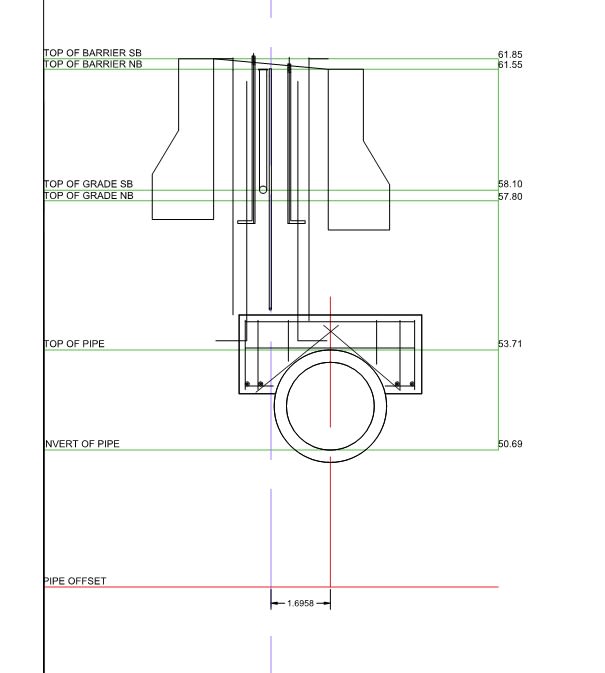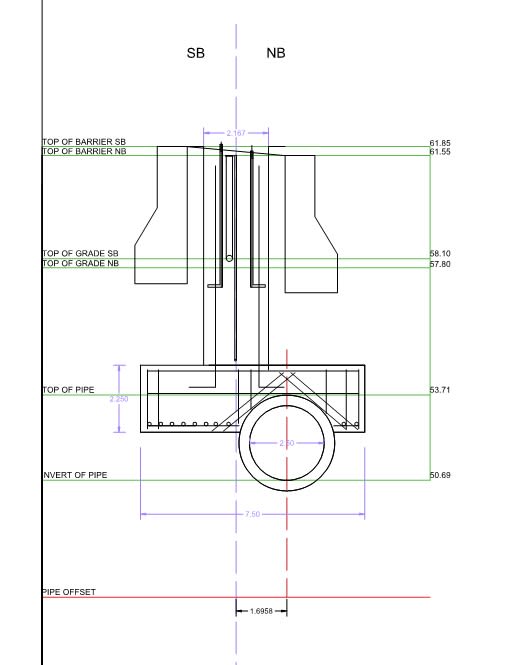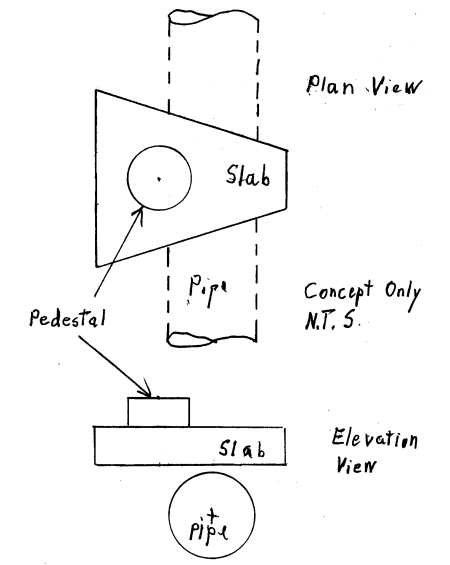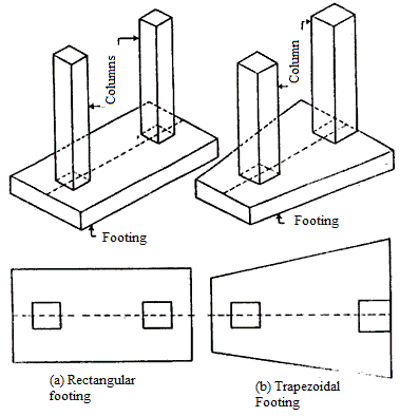LBengineer
Geotechnical
Hello all,
I have been looking into a problem my company has been having with installation of light pole foundations over Reinforced Concrete Pipes. We have a standard foundation design for the pipe being directly over the reinforced concrete pipe but obviously that isn't always the case. In the cases we are having problems, the pipe is significantly offset from the center of the foundation but not significantly enough to slip a precast shaft foundation by. for this case we usually install a shallow footing that is poured on top of the RFC pipe and includs rebar to distribute the load around the pipe. the idea that would make sense to me would be an eccentrically loaded shallow foundation with rebar to distribute that load away from the RFC pipe but i am not really sure where to start. I am looking for any readings that any one has used with distributing load within an eccentrically loaded foundation, if anyone has any ideas besides distributing loads in an eccentrically loaded foundation I would love to hear.
Note: in a majority of the cases, we are restricted by construction in the median of a roadway so we cannot move the lightpole out of the way of the pipe.
If you need any more information besides what I have provided, I would be happy to provide as much information as I have.
I have been looking into a problem my company has been having with installation of light pole foundations over Reinforced Concrete Pipes. We have a standard foundation design for the pipe being directly over the reinforced concrete pipe but obviously that isn't always the case. In the cases we are having problems, the pipe is significantly offset from the center of the foundation but not significantly enough to slip a precast shaft foundation by. for this case we usually install a shallow footing that is poured on top of the RFC pipe and includs rebar to distribute the load around the pipe. the idea that would make sense to me would be an eccentrically loaded shallow foundation with rebar to distribute that load away from the RFC pipe but i am not really sure where to start. I am looking for any readings that any one has used with distributing load within an eccentrically loaded foundation, if anyone has any ideas besides distributing loads in an eccentrically loaded foundation I would love to hear.
Note: in a majority of the cases, we are restricted by construction in the median of a roadway so we cannot move the lightpole out of the way of the pipe.
If you need any more information besides what I have provided, I would be happy to provide as much information as I have.


![[ponder] [ponder] [ponder]](/data/assets/smilies/ponder.gif)


